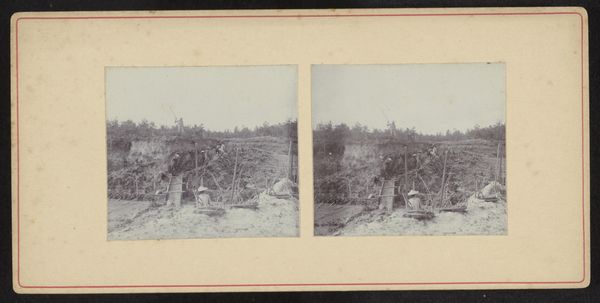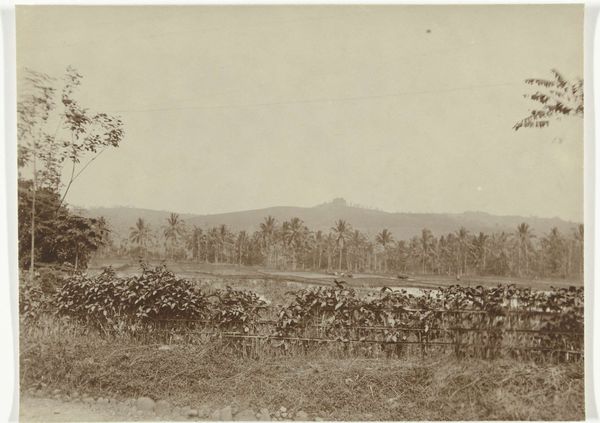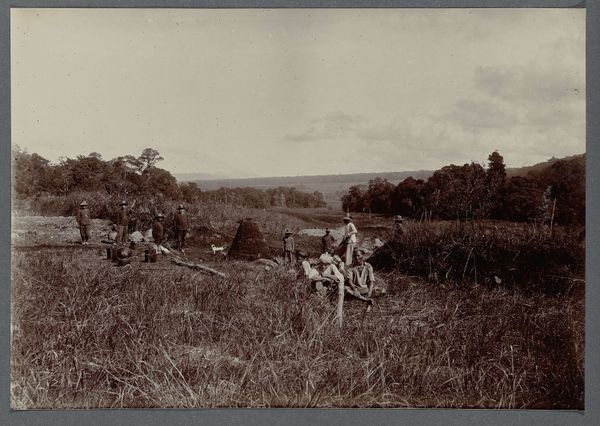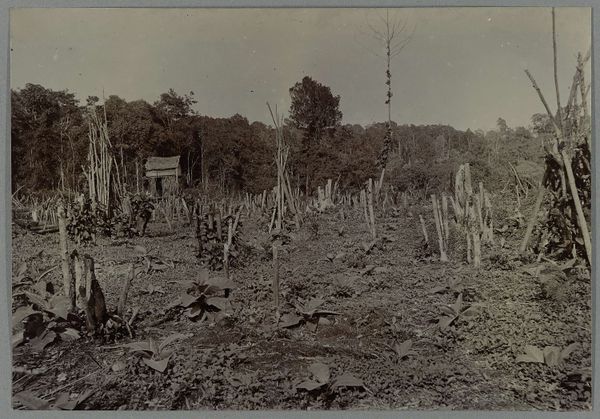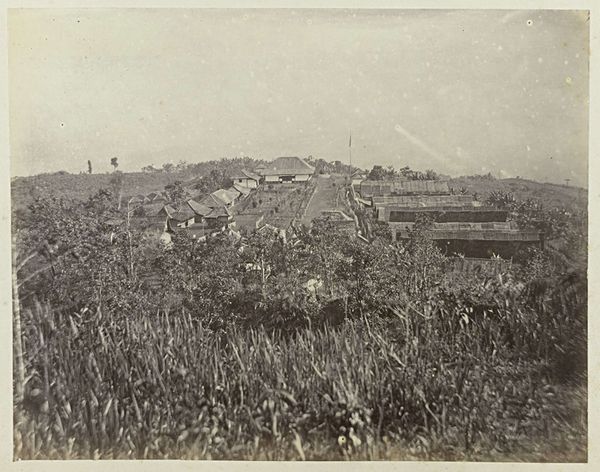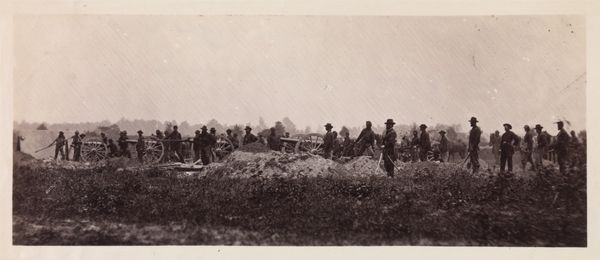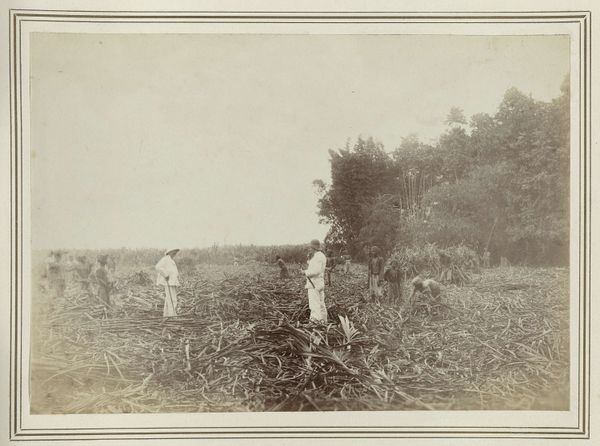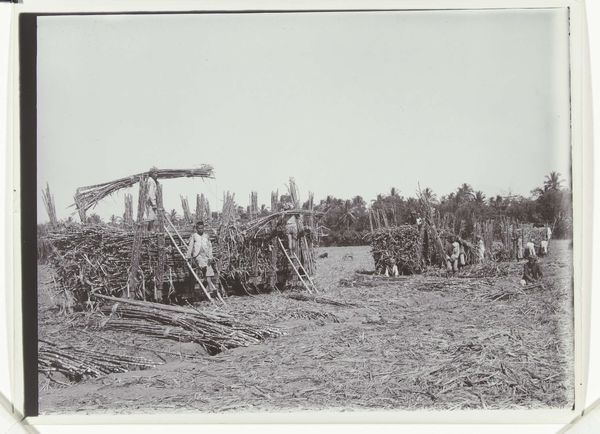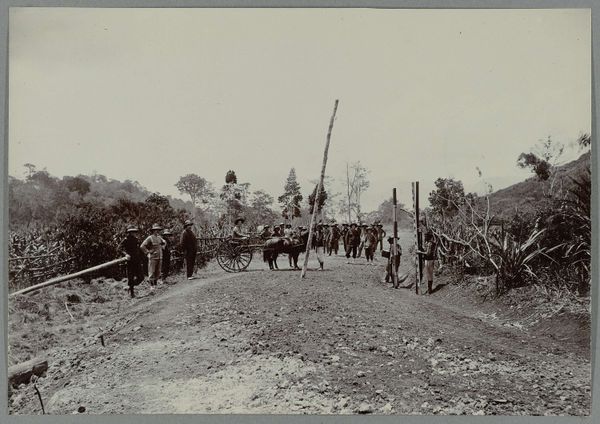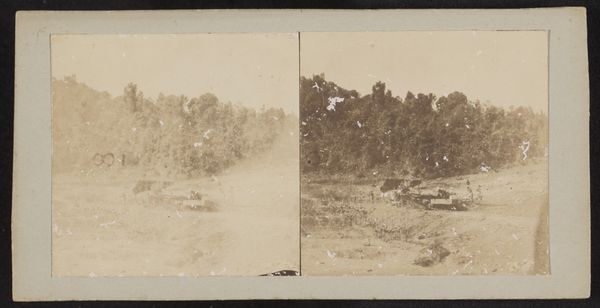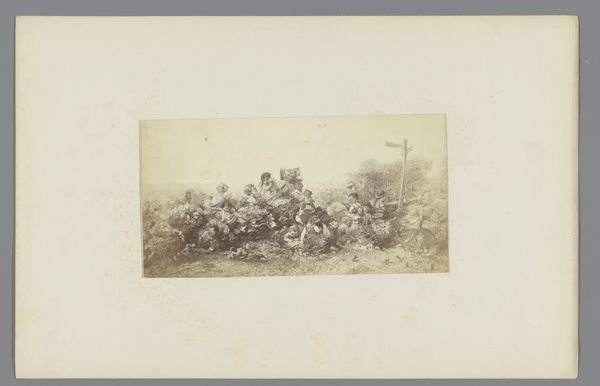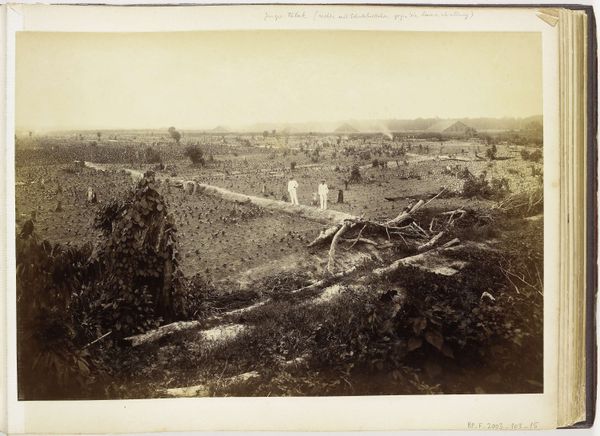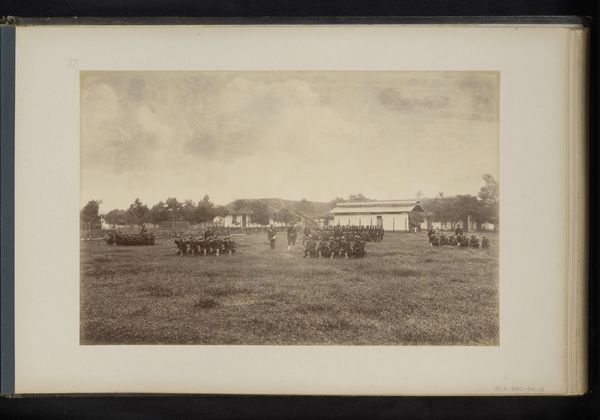
photography
#
landscape
#
photography
#
historical photography
#
19th century
#
realism
Dimensions: height 150 mm, width 210 mm
Copyright: Rijks Museum: Open Domain
Curator: This 1886 photograph, titled "Harvesting Sugar Cane", comes to us from Kassian Cépas, a name known in the realm of documentary photography of his era. Editor: It’s bleakly beautiful, isn't it? The monochrome tones accentuate the harshness of the scene, this vast, almost barren landscape punctuated by small figures laboring. The heavy load on that ox-drawn cart contrasts against the slightness of the human forms. Curator: Cépas captured this image likely in Java. He understood the symbolic weight of colonial realities; here, we see the engine of sugar production through indigenous hands and hard labor, feeding European appetites and industries. The figures are captured as archetypes, their individuality subordinate to the larger narrative of industry. Editor: I’m struck by how much the act of photography mirrors the act of resource extraction occurring in the scene. The glass plate negative itself is a form of capturing and transforming the world, fixing it into an object to be consumed. The materiality of the sugar cane stalks echoes the materiality of the photographic process itself, from the wet collodion to the albumen print. Curator: Absolutely. Consider the repeating, vertical forms of the sugarcane—they serve as a visual symbol of relentless agricultural rhythms imposed by colonial economies. Note how those shapes, those vertical lines contrast the more scattered forms in the field—visual signifiers, for me, that articulate power dynamics. Editor: I see it, too. Even the frame acts as a tool of confinement, containing this depiction of extraction and labor. It is easy to be consumed by this imagery of 19th-century productivity. Curator: Photography's ability to represent, even misrepresent, the humanity within larger systems is laid bare here. These aren’t just anonymous workers; their faces, though obscured, tell stories of resilience. Cépas may have sought to capture mere record, but these symbols have, over time, come to express deeper meaning. Editor: Yes, considering its complicated origins, seeing this photograph from a modern lens, you can't help but ponder about consumption: of the land, of human effort, of course the product itself, all converted through photographic medium. Curator: Reflecting on "Harvesting Sugar Cane" broadens the aperture through which we view history—as it reveals layers of culture, industry, and enduring human strength. Editor: Indeed. This piece challenges us to think critically not only about what we consume, but about how every image encodes complex relationships of power, production, and history.
Comments
No comments
Be the first to comment and join the conversation on the ultimate creative platform.
